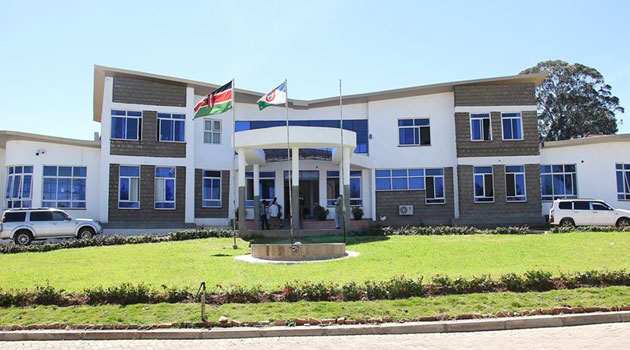
Bomet, Elgeyo Marakwet, Kirinyaga top list of counties with ethnic in employment » Capital News
NAIROBI, Kenya, Jun 14 – Bomet County has been singled out as the worst offender in ethnic imbalance within county public service, with a staggering 97.28 per cent of its workforce drawn from the Kalenjin community.
This is according to a new Senate report that highlighted deep-rooted ethnic exclusion across 32 devolved units.
The report, compiled with data from county governments and the National Cohesion and Integration Commission (NCIC), shows that Bomet, alongside Elgeyo Marakwet and Kirinyaga counties, has flouted the law by overwhelmingly hiring from a single ethnic group violating the County Governments Act, which caps such dominance at 70 per cent.
In Elgeyo Marakwet, 96.3 per cent of public employees are Kalenjin, while in Kirinyaga, 96 per cent are Kikuyu. Similar trends were found in counties like Nandi (95.67 per cent Kalenjin), Nyamira (95 per cent Kisii), Nyandarua (95.57 per cent Kikuyu), Kisii (94.3 per cent Kisii), and Kericho (93.3 per cent Kalenjin).
“These numbers reveal a silent crisis of exclusion.In some counties, public meetings are conducted in the dominant ethnic language, further marginalizing minorities and undermining the inclusivity envisioned by the Constitution,” the report states.
The Senate committee warns that the entrenchment of single-ethnic dominance in staffing not only erodes national cohesion but also contravenes Article 232 of the Constitution, which demands fair representation in public appointments.
West Pokot (93.57 per cent Kalenjin), Nyeri (93.66 per cent Kikuyu), and Wajir (93.1 per cent Somali) are also among the counties where minority groups are largely absent from government payrolls. In some cases, the dominance is so entrenched that ethnic minorities have little to no access to opportunities or participation in county governance.
“County governments were created to decentralize power and resources not to become ethnic enclaves.This kind of imbalance threatens to undo the very purpose of devolution,”the report states.
In Eastern Kenya, Kitui and Makueni registered ethnic compositions of 90 per cent and 92.63 per cent Kamba, respectively. In Central Kenya, Murang’a’s county workforce is 93.7 per cent Kikuyu.
Western and Nyanza regions are no exception. Kakamega (90.68 per cent Luhya), Vihiga (89.79 per cent Luhya), Kisumu (87.69 per cent Luo), Homa Bay (76.98 per cent Luo), and Migori (71.77 per cent Luo) also breach the legal threshold.
In the Rift Valley, Baringo (92.93 per cent Kalenjin) and Uasin Gishu (over 80 per cent Kalenjin) appear to hire largely within the dominant ethnic bloc.
The same trend persists in northern Kenya, where Garissa (80.15 per cent Somali), Mandera (81.4 per cent Somali), and Samburu (76.65 per cent Samburu) showing ethnic homogeneity in public staffing.
The Coast region also featured prominently. Kwale (75.2 per cent Mijikenda) and Kilifi (79 per cent Mijikenda) reflect the same pattern of exclusion, while Kajiado (70.53 per cent Maasai) barely meets the legal threshold.